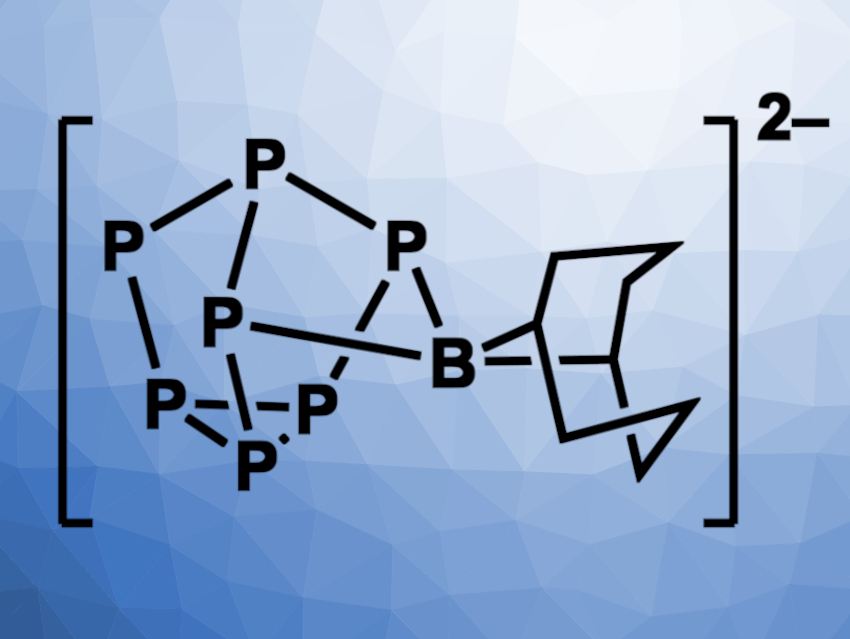Zintl phases contain polyanions, such as [P7]3–. There is some research involving catalytic uses of Zintl-derived clusters, and clusters based on a [P7] framework have shown some interesting reactivities. John E. McGrady, University of Oxford, UK, Meera Mehta, University of Manchester, UK, and colleagues have found that [P7]-derived clusters can be used as catalysts for the hydroboration of carbonyl compounds
The team synthesized the boron-functionalized heptaphosphide Zintl cluster [(BBN)P7]2– from a [P7]3– salt, which was first converted to a [HP7]2– salt. The [HP7]2– salt was reacted with the 9-borabicyclo[3.3.1]nonane dimer (HBBN)2 in tetrahydrofuran (THF) under elimination of H2 to give the desired boron-functionalized heptaphosphide. According to the researchers, this dehydrocoupling approach is an unprecedented reaction pathway for the functionalization of Zintl clusters.
The sodium salt [Na(18-Crown-6)]2[(BBN)P7] was then used as a catalyst in the hydroboration of aldehydes, ketones, carbodiimides, isocyanates, and CO2. Reductions of carbonyls are widely used, e.g., in the chemical industry, and the reduction of CO2 to give useful products is important for sustainable chemistry. The team found that the cluster can promote these reactions under mild conditions and serve as a transition-metal-free catalyst. CO2, for example, was selectively and efficiently reduced to methoxyborane.
- A Zintl Cluster for Transition Metal-Free Catalysis: C=O Bond Reductions,
Bono van IJzendoorn, Saad F. Albawardi, Inigo J. Vitorica-Yrezabal, George F. S. Whitehead, John E. McGrady, Meera Mehta,
J. Am. Chem. Soc. 2022.
https://doi.org/10.1021/jacs.2c08559




